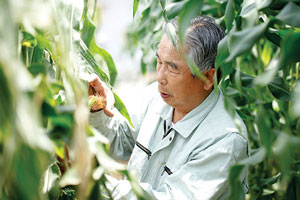What We Can Learn from Japan's Aging Workforce

As the population of the world’s developed economies grows older, the effect on the macroeconomy continues to be looked at carefully by researchers. The experiences of Japan, however, could shed some light on potential effects. A recent article in The Regional Economist surveyed some of the existing literature on the effect of aging on inflation in Japan.
Economist Maria Canon and her co-authors1 explained that a population’s average age can be shifted upward by two mechanisms:
- A decline in fertility, which eventually decreases the number of those potentially entering the labor force
- An increase in longevity, which increases the share of older workers in the population
Japan has experienced both, which has given it a growing supply of older workers and a shrinking population of younger workers.
Contrasting Effects
A study by Mitsuru Katagiri, Hideki Konishi and Kozo Ueda argued that aging is deflationary when caused by an increase in longevity, but inflationary when cause by a decline in birth rates.2 Their model showed that the deflationary effect of higher longevity dominated.
Group Influence on Policy
A study by St. Louis Fed President James Bullard, Research Officer Carlos Garriga and Research Director Christopher Waller looked at the differences in inflation preferences between young cohorts and older cohorts:3
- Young cohorts prefer relatively high inflation, because they have no assets and wages are their main source of income.
- Older cohorts prefer relatively low inflation, because they work less and depend on the return of their assets.
Canon and her co-authors noted: “When older cohorts have more influence on redistributive policy, the economy has relatively low inflation.”
Selling Assets
A study by Derek Anderson, Dennis Botman and Ben Hunt found that the increased number of pensioners in Japan led to retirees selling significant amounts of financial assets.4 The sell-off, in turn, fueled appreciation of the yen, lowering costs of imports and leading to deflation.
Link between Aging and Inflation
A paper by Shigeru Fujita and Ippei Fujiwara examined how a decline in fertility (thus, a decrease in people entering the workforce) could affect inflation.5 The effect came in two stages:
- Initially, an increased share of older and, thus, more-experienced workers led to increased output and inflation.
- Eventually, fewer workers entering the workforce led to negative labor force growth, and deflation resulted.
Canon and her co-authors wrote: “When the model was subject to a significant decline in fertility, such as the one experienced in Japan in the early 1970s, the mechanism in the model led to prolonged deflation.”
Notes and References
1 Economist Marianna Kudlyak and Research Associate Marisa Reed, both of the Federal Reserve Bank of Richmond.
2 Katagiri, Mitsuru; Konishi, Hideki; and Ueda, Kozo. “Aging and Deflation from a Fiscal Perspective.” Federal Reserve Bank of Dallas Working Paper No. 218, November 2014.
3 Bullard, James; Garriga, Carlos; and Waller, Christopher J. “Demographics, Redistribution, and Optimal Inflation.” Federal Reserve Bank of St. Louis Review, November/December 2012, Vol. 94, No. 6, pp. 419-40.
4 Anderson, Derek; Botman, Dennis; and Hunt, Ben. “Is Japan's Population Aging Deflationary?” Working Paper 14/139, International Monetary Fund, August 2014.
5 Fujita, Shigeru; and Fujiwara, Ippei. “Aging and Deflation: Japanese Experience.” Unpublished manuscript, July 2014.
Additional Resources
- Regional Economist: Aging and the Economy: The Japanese Experience
- On the Economy: Labor Force Participation: The U.S. and Its Peers
- On the Economy: How Have Prime-Age Workers in School Affected the Labor Market?
Citation
ldquoWhat We Can Learn from Japan's Aging Workforce,rdquo St. Louis Fed On the Economy, Nov. 23, 2015.
This blog offers commentary, analysis and data from our economists and experts. Views expressed are not necessarily those of the St. Louis Fed or Federal Reserve System.
Email Us
All other blog-related questions

